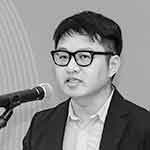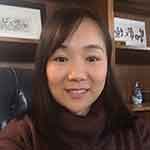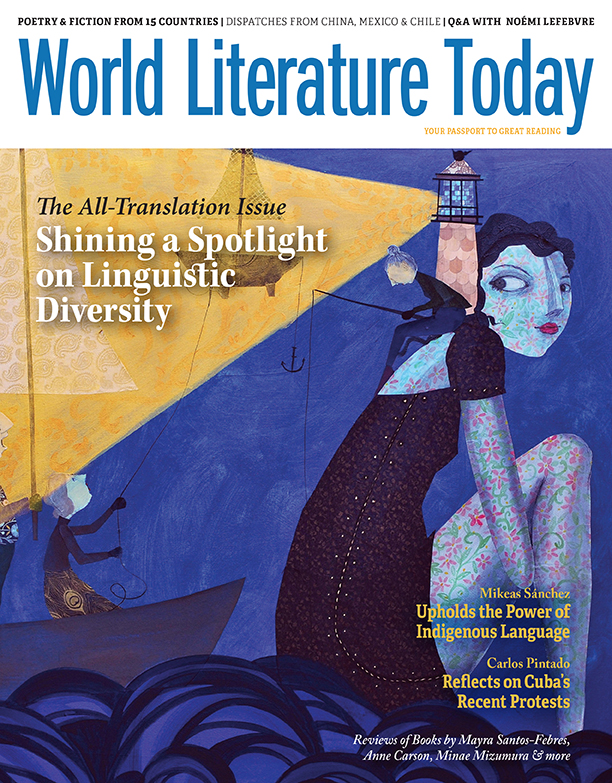Xu Bing’s Artistic Design of Language
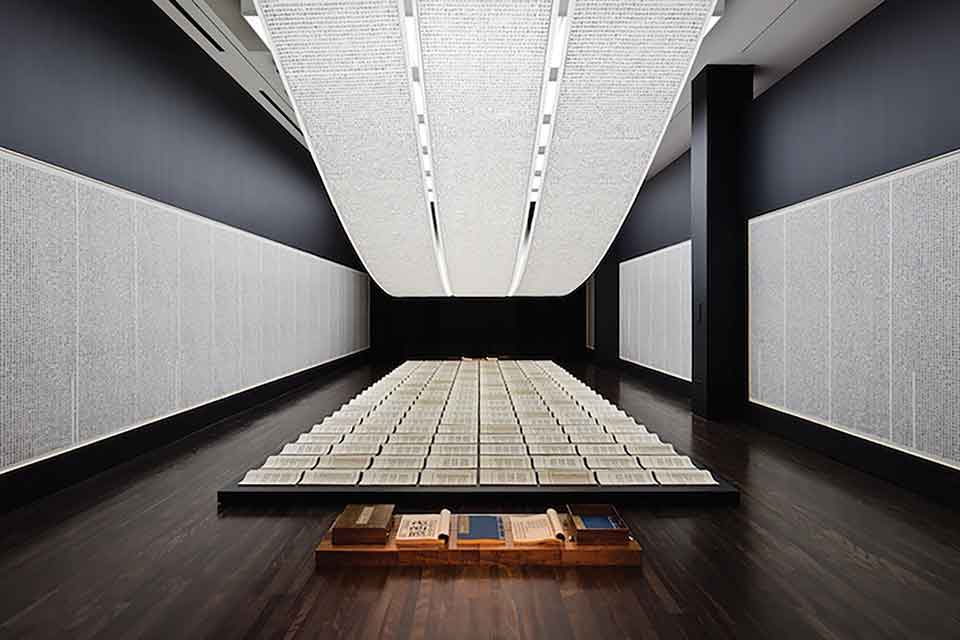
Wang Xiaosong’s essay unpacks the design philosophy of contemporary Chinese artist Xu Bing’s major works. What is notable in Xu’s artwork is his persistent effort in creating a “pseudo” but universal language based on the commonality of visual communication.
Since the release of its trailer in 2015, Chinese artist Xu Bing’s (b. 1955) first film, Dragonfly Eyes, has enthralled many viewers. This eighty-one-minute independent film does not have an actor, a cameraman, or a script; all its visual material has been taken from public surveillance videos. Every picture appearing in the film is real, yet the story of the film is fictional. Xu claimed in an interview that Dragonfly Eyes authenticates the imagination of the 1998 American film The Truman Show: “Today’s world is actually a huge film studio, and it’s livestreaming. Therefore, every single person among us is an actor/actress.” When put together, the seemingly disconnected video clips tell a story that human eyes could not see. The story of the film, centered around the life of a girl named Qingting (Dragonfly), is mesmerizing. The immediate authenticity of the video footage used in the film constantly gives viewers a sense of intimate thrill.
In terms of its form and method, Dragonfly Eyes actually follows Xu Bing’s Book from the Ground, an art project he has been working on since 2003. According to Xu Bing Studio, “Dragonfly Eyes is linked to Book from the Ground in terms of the approach. All the materials come from the materials that have been created by human civilization. There is one common feature about these materials: they had not existed or had been extremely scarce in the past, but they have proliferated in recent years.” Through examining the features of individual elements, such as characters, signs, or images, Xu has developed a system of analysis and deduced inner laws that are transferable to other mediums. Xu believes that the fresh blood of contemporary art often comes from outside art, which is evinced in his idea of “utility and reproductivity beyond art.” For example, as early as 1987 he explored “pictorial multiplicity” in printmaking, arguing that “[a]n imprint of multiplicity and prescription is the crucial element that differentiates printmaking from other fine arts.” According to Xu, the concept of pictorial multiplicity has a more intimate and direct connection to the aesthetics that have risen with industrialization and standardization in modern society.
The Chinese language’s visual dimension of expression has always been overlooked.
During a 2017 calligraphy exhibition, Xu Bing gave an impromptu talk on the ideological characteristics of Chinese fonts, arguing that, compared to the traditional semantic function of language, fonts themselves have more commonality and universality in terms of meaning transmission. The Chinese language’s visual dimension of expression, however, has always been overlooked. Traditional Chinese commentaries on writing style and calligraphy style were connected, but since writing and calligraphy were predominantly regarded as the writer’s individual emotional outlet, there was no systematic study of the common and universal visual features of Chinese characters. The modern age, however, is an age of visuality. Xu’s generation grew up reading the different fonts in state-run newspapers, such as People’s Daily and People’s Liberation Army Daily. They taught themselves about the use of fonts through their own observation, research, and hands-on practice (Xu was an editor and designer of the rusticated youth magazine Ravishing Mountain Flowers in 1975 and 1976). These experiences have not only inscribed in their minds a complex impression about the solemnity of language but also contributed to a deep understanding of the social and cultural functions of writing and fonts. We can find Xu’s sensitivity to fonts in all his artworks. For example, Xu chose the Song font for Book from the Ground precisely due to the font’s neutral quality.
These experiences not only inscribed in their minds a complex impression about the solemnity of language but also contributed to a deep understanding of the social and cultural functions of writing and fonts.
There is no fixed pattern for Xu Bing’s artistic materials, neither does he add any additional processing to the basic unit of art language, which I call “metalanguage,” in his design and artistic creation. He tends to rely on the naturally formed logic and universally recognized foundation of man-made symbols, from which the metalanguage emerges spontaneously. This design method is manifest in the public signs in Book from the Ground, in the schematized nature in Mustard Seed Garden Landscape Scroll (2010), and in every image in Dragonfly Eyes. The metalanguage Xu employs is different from the so-called ready-made in contemporary art. Xu’s materials are not intentionally fabricated to express the artist’s ideas; instead, his materials exist spontaneously, like the original conditions set in computer algorithm.
In his essay “The Six Methods and the Chinese Visual Design Thinking,” the Chinese art critic Hang Jian makes an insightful statement: “The Chinese script is a visual communication of Eastern culture centered on ancient Chinese culture. The Six Methods (Liushu) that emerged during the formative stage of Chinese characters represent the visual design thinking and design methods used by easterners to better communicate.” In Book from the Sky (1987–1991) and Book from the Ground, Xu Bing’s disassembling (not deconstruction) and reassembling of Chinese characters consistently follows the three major traditional methods of making Chinese characters: namely, the pictorial, the referential, and the metaphorical. In his Book from the Sky and Square Word Calligraphy (1994–ongoing), despite the linguistic breeding between two completely different writing systems (Chinese and English), what remains the same is the morphological design of fonts. In Square Word Calligraphy, in particular, Xu has incorporated the twenty-six English letters into the visual framework of Chinese square characters, creating a new combination of phonetic and semantic symbols.
In all those projects, Xu unfolds the inner logic of language’s formation, strips away language’s instrumental semantic function, and focuses on the potential self-expression of language’s fonts and visual compositions. For Xu, the language that conveys meaning semantically is “true” language, and the language that is devoid of this conventional signifying function and conveys meaning visually is “pseudo” language. He has been seriously exploring the “pseudo” language in his artwork, following language’s own system of visual conceptualization. Xu characterized his project Book from the Sky as follows: “A man spent four years making something that says nothing.” The effacement of the conventional signification function of language, which can be traced back to his earlier project Five Series of Repetition (1987), is a key component of Xu’s design philosophy and artistic innovation. In the three versions of his Magic Carpet (2006), for example, the original design was gradually overwritten by changing external conditions based on the specific cultures and beliefs of the target audiences, and eventually turned into some simple geometric figures. What was left was only the principle governing the design. Without understanding the key to Xu’s design philosophy, it would be difficult to unpack the hidden contents of the “true” language in his artwork.
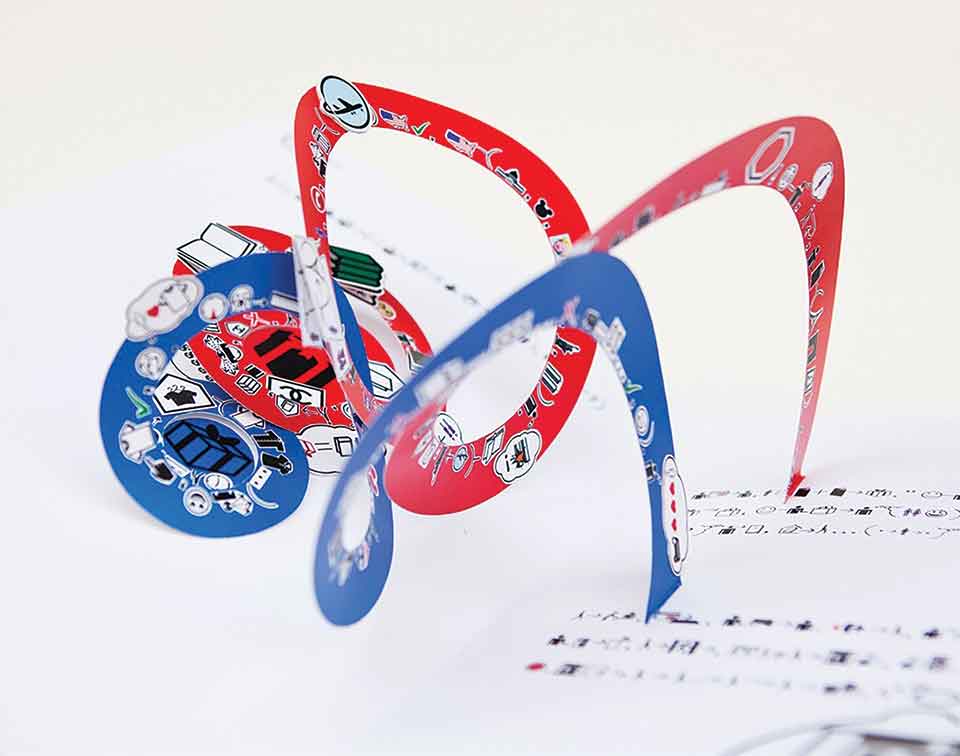
Xu unfolds the inner logic of language’s formation, strips away language’s instrumental semantic function, and focuses on the potential self-expression of language’s fonts and visual compositions.
Xu Bing is not alone in exploring the encrypted culture of Chinese characters. German scholar Lothar Ledderose and Swedish sinologist Cecilia Lindqvist have also published discussions on this topic. One might even confuse Xu’s projects with Ledderose’s influential work Ten Thousand Things: Module and Mass Production in Chinese Art (2000), which begins with a discussion of the modular system of Chinese script and explores its deep roots in Chinese art and culture. Like Xu, Ledderose believes that the learning and use of Chinese script have shaped the Chinese character. It is noteworthy that Ledderose’s Ten Thousand Things was completed in 1999, whereas Xu’s Book from the Sky and Square Word Calligraphy were conceived in 1986 and 1993, respectively. Ledderose’s “modular system” resembles Xu’s “metalanguage”: the latter also begins with the Chinese script and uses it to analyze Chinese art.
For example, in Mustard Seed Garden Landscape Scroll, Xu regards writing as a method for understanding Chinese art and uses it as a dictionary to rewrite the textbook for Chinese painting. He implanted a visual “algorithm” in the cluster of metalanguages/modules, and by editing and calculating their relative positions and relationships, he formed a conscious programming process that is devoid of the traditional function of linguistic signification but is based on the common and neutral visual experience, leading people to discover the limits of their own thinking from accustomed visual activities. It reminds us not only of the multiplicity that the artist discovered in printmaking but also how the Four-Corner Method (a Chinese character-input method) dissembles and reads the text—even if one does not know the sound or radical of a character, one can find it in the dictionary using this unique method. From the perspective of the metalanguage/module, there are many limits and discrepancies in analyzing Chinese art in terms of style. For example, the famous saying “the style is the man” is not simply a matter of style but also a matter of combining certain basic units. The analysis of “style” is based on differences, yet the analysis of “metalanguage” or “module” focuses on the commonality and transferability of characters.
Xu’s artworks have been used on many commercial products. As derivatives of a famous artist’s masterpieces, his Square Word Calligraphy logos are zealously sought after by many public and private organizations. However, the designer Xu Bing has long been overshadowed by the artist Xu Bing, leading people to overlook the logical thinking, methods, and processes he employs in producing his artwork. Xu’s artistic designs are notably well-planned, systematic, and transferable: he treats individual elements, metalanguages/modules, as the given original conditions and deduces certain laws or feasible plans with the aid of systematic inference. Font design is naturally akin to system design. For example, the story written with the public signs in Book from the Ground follows the progression of character → word → sentence → paragraph → chapter, representing Xu’s consistent effort in achieving visual communication through the exploration of visual commonality. The works in his Book from the Ground document his design of an entire set of visual identity systems that evolved from one input command. Design researchers can write many papers about his artwork, and the scholars of consumer society can also find interesting materials in them, even though Xu does not view visual symbols the same as semiotics in the theory of consumerism.
Xu Bing is not interested in the rigorous methodology of Western philosophy. His own artworks and writings are completed in close proximity to real life and are highly transparent. The clarity of his thought and the simplicity of his expressions leave little room for critics’ interpretation. In his letter “To: Mr. Jacques Derrida” (2005), Xu writes: “Perhaps my mind is not adapted to this rigorous Western method of forward and backward analysis, I feel such analysis complicates the otherwise simple things.” In the same letter, he boldly claims that one would not be able to produce Derrida’s theory after reading Derrida’s works. From the perspective of utility, Xu’s artistic designs are aimed at the orderly activities of human beings over a long period of time; they are a purposeful and planned continual adaptation to, and adjustment of, the self’s milieu; they are the simplification and management of complex information; and they reflect a kind of design thinking external to philosophy, artistic concepts, or specific product design.
Xu’s artistic designs reflect a kind of design thinking external to philosophy, artistic concepts, or specific product design.
It is because of the shortened distance and increased frequency of human interaction brought about by globalization that the new pictograph in Book from the Ground becomes necessary and possible. Unlike Esperanto, Book from the Ground starts from the outer packaging of language. The motivation and significance of Xu’s ideal of a universal language, like the one represented by Book from the Ground, cannot be understood from the perspective of contemporary art without considering the application of these methods in reality. Like all product designs, Xu’s design always has a clear range of goals.
When Xu Bing revisited the printing house that produced Book from the Sky with the movable-type printing technique, he imagined the married life of Xiaobian, a female printer who previously worked there. The thought did not necessarily stem from Xu’s cultural melancholy. Everyone with a basic understanding of the history of printing knows that movable type was doomed to be replaced by mechanical printing. Language, like its creators and users, cannot escape this fatalistic cycle of birth, growth, adaption, or extinction. It is precisely this realization of the incessant evolution of the human world and language that drives Xu Bing to design a new language, one that can communicate in an unconventional but universal way for future generations or even for extraterrestrials.
Translation from the Chinese
Editorial note: This essay was originally published in Art China (Yishu dangdai), no. 10 (2017).
